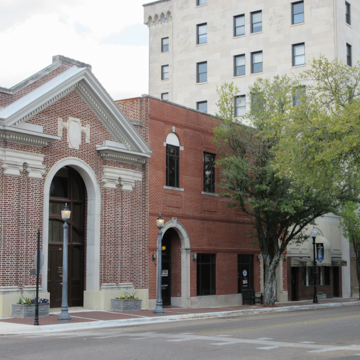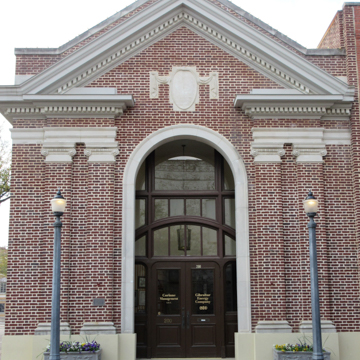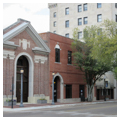With remarkable prescience, the bank directors commissioned this sophisticated classical design in 1920 when the institution only served a small timber and farming community. Following the oil boom, the bank was reorganized and received a federal charter. Despite its modest size, the two-story Flemish bond brick bank has an air of monumentality. The arched entrance is framed by paired Ionic pilasters that support a broken pediment. A wide entablature unifies the front and side elevations. The south-side elevation has single-story brick piers capped by cast-stone spheres marking the window bays. After the bank moved in 1973, the building was converted for office space; no original interior fittings remain.
You are here
Office Building (Bank of Commerce)
If SAH Archipedia has been useful to you, please consider supporting it.
SAH Archipedia tells the story of the United States through its buildings, landscapes, and cities. This freely available resource empowers the public with authoritative knowledge that deepens their understanding and appreciation of the built environment. But the Society of Architectural Historians, which created SAH Archipedia with University of Virginia Press, needs your support to maintain the high-caliber research, writing, photography, cartography, editing, design, and programming that make SAH Archipedia a trusted online resource available to all who value the history of place, heritage tourism, and learning.










